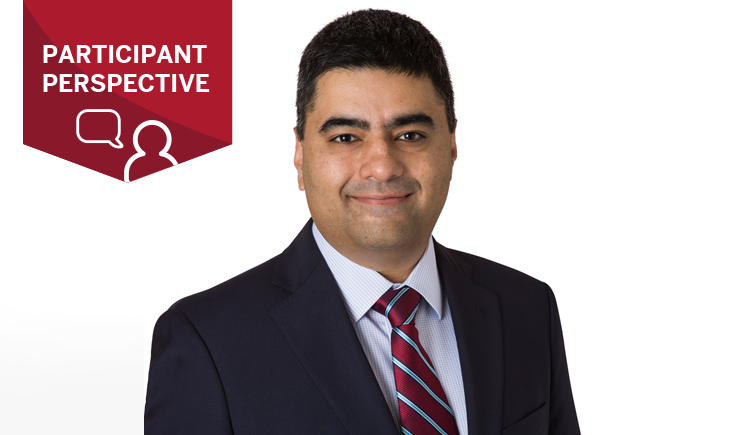
Since the 1999 publication of the Institute of Medicine (IoM) report, “To Err is Human: Building a Safer Health System,” there has been growing awareness about the importance of ensuring quality and safety in the health care setting. In the two decades since this publication first appeared, poor outcomes coupled with the uncontrollable rise in health care costs have resulted in demands for the industry to focus on enhancing value for patients.
This means that clinician-leaders and other health care professionals who want to expand their leadership capabilities must have a deep understanding of safety, value, and informatics — and how to apply them — in order to be successful. Yet, many clinicians have not been formally trained in these concepts. Therefore, they are forced to learn these elements on the job, which may weaken their effectiveness.
A Changing Role for Clinicians
“Clinicians and leaders can benefit from filling in the gaps in their knowledge in a structured way to help them to guide meaningful change within their organizations,” explains Katherine Santos, MBA, Vice President of Strategy and Operational Excellence for Chelsea Jewish Lifecare in Massachusetts and former Director of Service Excellence and Performance Improvement at Brigham and Women’s Faulkner Hospital. Santos also currently serves as Co-Director of Harvard Medical School's postgraduate certificate program: Safety, Quality, Informatics & Leadership.
Santos says that in recent years, clinicians who work on the front lines in the delivery of care are expected to play an increasingly important role in driving improvements for the good of their organizations and patients. This is a change from past models in which change originated in the C-suite or administration.
“Today, there are so many problems and they are so complex, you can’t expect one person to solve them. It is up to the leadership to call on the clinical experts to help support them in making changes,” she says. This requires a team approach with both sides understanding how to communicate with each other and work toward a common vision. It also requires clinicians to make a concerted effort to build up their quality improvement skills in key areas in order to bring about needed change to achieve that value-based care, so everyone benefits.
Models to Support Clinicians’ Quality Improvement Efforts
One way clinician-leaders can help improve organization efficiency is by looking to improvement models that have been effective in other industries. “For instance, we can look to the airline industry and learn from their approach to recognizing and reporting on issues and problems. Creating a culture of safety requires being open to discussing such problems in order to address them,” Santos says.
In addition, the automotive industry has been particularly effective in improving processes to drive quality and value in a meaningful way.
Santos particularly recommends health systems look to the Lean Management System, also called the Toyota Production System. This is a model created by Toyota that emphasizes continual improvement through waste elimination. In recent years, this approach has been employed by many health care organizations with success.
One of the key tenets of the Lean Management System is that the people who do the work are engaged in the process and are, therefore, able to come up with the best ideas. “This approach recognizes that the people on the front line [in this case, the clinicians] are experts in the process so they know what can be changed and what cannot and what can be done to improve their efforts,” Santos says, adding, “They are uniquely qualified and positioned to come up with ideas and to motivate their colleagues to get involved.”
Using Big Data to Understand Needs
Clinician-leaders also need to understand informatics, since there is a need for big data to inform improvement efforts and also to measure effectiveness.
“Clinician-leaders and others driving efforts don’t need to be informatic experts,” Santos says. “But they do need to understand and be able to translate the findings in such a way that it will resonate with other clinicians,” she adds.
This is especially important today with the move toward electronic health records. “We need to be able to use information to come up with more standardized care and to integrate evidence-based medicine,” she says. Clinician-leaders need to understand where the data is coming from and understand how to use it to bring about change. “Electronic health records have increased our capacity to collect data in large and meaningful sample sizes, which has made it easier to capture info inside the clinical care space,” Santos says.
“As more systems are looking at patient reported outcomes with apps and other data collecting methods, we have more information to help us analyze and improve what we are doing in the therapeutics space,” she points out.
With the move towards personalized medicine, informatics can also enable clinicians to look at data sets from specific patient populations to help them customize treatments for different needs.
“Change is happening so fast, clinician-leaders need to stay on top of the trends and understand how to respond,” she adds.
The Learning Health System
With so many elements that are involved, Santos points out that clinician-leaders need to be familiar with the concept of a learning health system, first described by the Institute of Medicine in 2007 as a model that integrates science, informatics, incentives, and culture in order to achieve continuous improvement.
The learning health system serves as the framework or platform that ties all of the pieces together effectively and embeds these best practices into the very fabric of the organization or health system.
Within the learning health system, there are three main actions that make up in a continuous cycle in order to drive innovation and sustain improvement over the long term, Santos explains. These actions are: data to knowledge, knowledge to performance and performance to data. Over time these actions help organizations to continuously study and adapt using data and analytics to generate knowledge, engage stakeholders and implement behavior change to transform practice and achieve quality, safety and value within the health system.
Putting People First
Of course no improvement efforts can be truly successful, though, without keeping the focus on the patient.
“We can look at processes with a clinical eye and clinical mentality but in the end, we always need to get back to the patient at the center,” Santos says.
This means clinician-leaders must always have the patient experience in mind and think about ways to improve things to make them better for patients, not just for the organization.
“The patient is everything. Therefore, clinicians need to understand how to engage patients and use satisfaction surveys and the comments to make improvements,” Santos points out. “We also need to do our own observations and interviews and even walk through our settings and try to see our services and processes through the patient’s viewpoint.”
Building an Effective Toolkit
Santos points out that attending Harvard’s Safety, Quality, Informatics and Leadership program, which is a one-year intensive leadership program, is one way that clinician-leaders can increase their understanding of all of these and other quality improvement principles to maximize their impact. “No matter where you work [in the U.S. or globally], building your toolkit with some important patient safety and quality improvement skills can help you enhance your career and lead your organization to success in the changing landscape,” she says.
Written by Lisa D. Ellis


